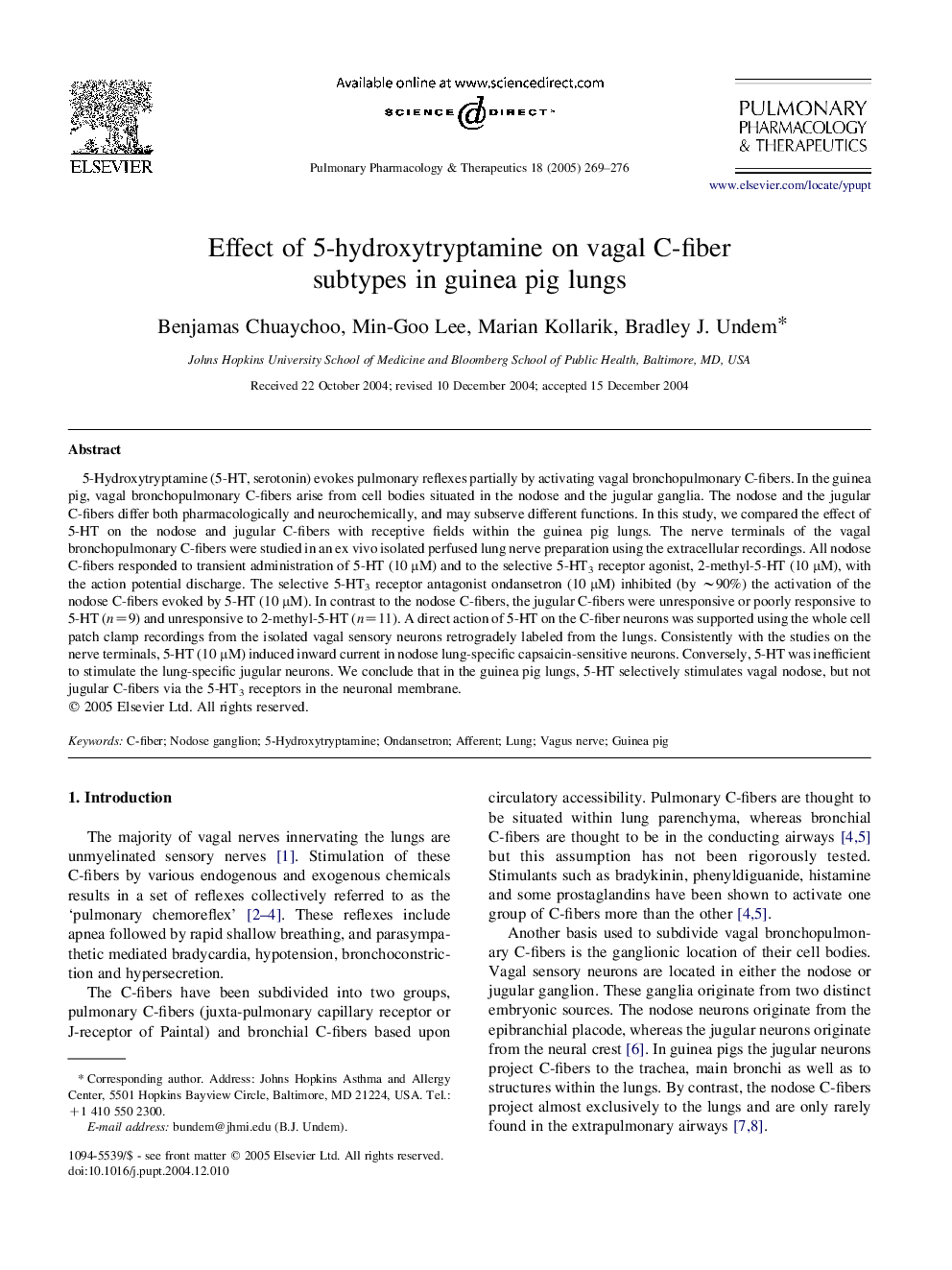| Article ID | Journal | Published Year | Pages | File Type |
|---|---|---|---|---|
| 9017351 | Pulmonary Pharmacology & Therapeutics | 2005 | 8 Pages |
Abstract
5-Hydroxytryptamine (5-HT, serotonin) evokes pulmonary reflexes partially by activating vagal bronchopulmonary C-fibers. In the guinea pig, vagal bronchopulmonary C-fibers arise from cell bodies situated in the nodose and the jugular ganglia. The nodose and the jugular C-fibers differ both pharmacologically and neurochemically, and may subserve different functions. In this study, we compared the effect of 5-HT on the nodose and jugular C-fibers with receptive fields within the guinea pig lungs. The nerve terminals of the vagal bronchopulmonary C-fibers were studied in an ex vivo isolated perfused lung nerve preparation using the extracellular recordings. All nodose C-fibers responded to transient administration of 5-HT (10 μM) and to the selective 5-HT3 receptor agonist, 2-methyl-5-HT (10 μM), with the action potential discharge. The selective 5-HT3 receptor antagonist ondansetron (10 μM) inhibited (by â¼90%) the activation of the nodose C-fibers evoked by 5-HT (10 μM). In contrast to the nodose C-fibers, the jugular C-fibers were unresponsive or poorly responsive to 5-HT (n=9) and unresponsive to 2-methyl-5-HT (n=11). A direct action of 5-HT on the C-fiber neurons was supported using the whole cell patch clamp recordings from the isolated vagal sensory neurons retrogradely labeled from the lungs. Consistently with the studies on the nerve terminals, 5-HT (10 μM) induced inward current in nodose lung-specific capsaicin-sensitive neurons. Conversely, 5-HT was inefficient to stimulate the lung-specific jugular neurons. We conclude that in the guinea pig lungs, 5-HT selectively stimulates vagal nodose, but not jugular C-fibers via the 5-HT3 receptors in the neuronal membrane.
Related Topics
Health Sciences
Medicine and Dentistry
Pulmonary and Respiratory Medicine
Authors
Benjamas Chuaychoo, Min-Goo Lee, Marian Kollarik, Bradley J. Undem,
